Why Trust Gadgetbyte?
At Gadgetbyte, we invest substantial hours into rigorously testing each product or service we review, guaranteeing that you make informed purchases. Learn more about our testing process.
Review Overview
Design & Build
9.5/10
Display
9.5/10
Performance
10/10
Back Cameras
9/10
Front Camera
9/10
Software & UI
8.5/10
Battery
9/10
Value for Money
9/10
After all this time, the Xiaomi Mi 11 still makes for a compelling flagship smartphone. From its excellent build quality, vibrant AMOLED screen, top-notch performance, competitive cameras, to a decent battery endurance, it's got them all. Still, a couple of missing things like an IP certification and a telephoto lens that we've come to naturally expect from flagship phones keeps Mi 11 from competing with the big dogs.
Today, I’ll be talking about the Xiaomi Mi 11 in this long-term review. Just a year ago, the company was nowhere to be seen when looking at the list of best flagship phone makers. Sure, they made some good premium phones but Xiaomi ultimately lagged behind the competition in one way or the other. But 2021 has changed that!
In today’s date, Xiaomi’s top-of-the-line phones like the Mi 11 Ultra have received good reviews from top reviewers like MKBHD and Mrwhosetheboss, which has officially marked Xiaomi as a prominent name in the flagship territory.
Xiaomi Mi 11 Specifications:
- Body: 74.6 x 164.3 x 8.06mm, 196 gm, Gorilla Glass 5
- Display: 6.81-inches AMOLED DotDisplay, 120Hz refresh rate, 480Hz touch sampling rate, Gorilla Glass Victus, SGS Eye Care, 10-bit color
- Resolution: WQHD+ (3200 x 1440 pixels), 20:9 aspect ratio, 515 PPI
- Chipset: Qualcomm Snapdragon 888 5G (5nm Mobile Platform)
- CPU: Octa-core (1x2.84 GHz Kryo 680 & 3x2.42 GHz Kryo 680 & 4x1.80 GHz Kryo 680)
- GPU: Adreno 660
- Memory: 8/12GB LPDDR5 RAM, 128/256GB UFS 3.1 storage (fixed)
- Software & UI: Android 11 with Xiaomi's MIUI 12 on top
- Rear Camera: Triple (with LED flash);– 108MP f/1.85 Samsung ISOCELL Bright HMX, OIS– 13MP f/2.4 ultra-wide-angle lens, 123º FOV– 5MP f/2.4 telemacro camera, 3cm – 10cm focus
- Front Camera: 20MP f/2.2 sensor (punch-hole cutout)
- Audio: Dual speakers, Harman Kardon sound, Hi-Res Audio
- Security: Optical in-display fingerprint sensor, Face unlock
- Sensors: Accelerometer, Ambient Light, Electronic, Gyroscope, Proximity, Linear Motor, IR Blaster
- Connectivity: Dual-SIM (Nano), Wi-Fi 802.11 a/b/g/n/ac/ax (Dual-band), Bluetooth 5.2, GPS / AGPS / Glonass / Galileo / Beidou, USB Type-C, NFC, 4G LTE, 5G
- Battery: 4600mAh, 55W wired/50W wireless charging (55W GaN power adapter provided inside the box)
- Color options: Horizon Blue, Midnight Gray, White, LeiJun Limited Version
- Price in Nepal: Rs. 89,999 (8/256GB)
Xiaomi Mi 11 Long-Term Review:
As for the Mi 11, I have been using it as our primary device and comparing it side-by-side with other high-end phones for the better part of 3 months and we’ve had some interesting findings.
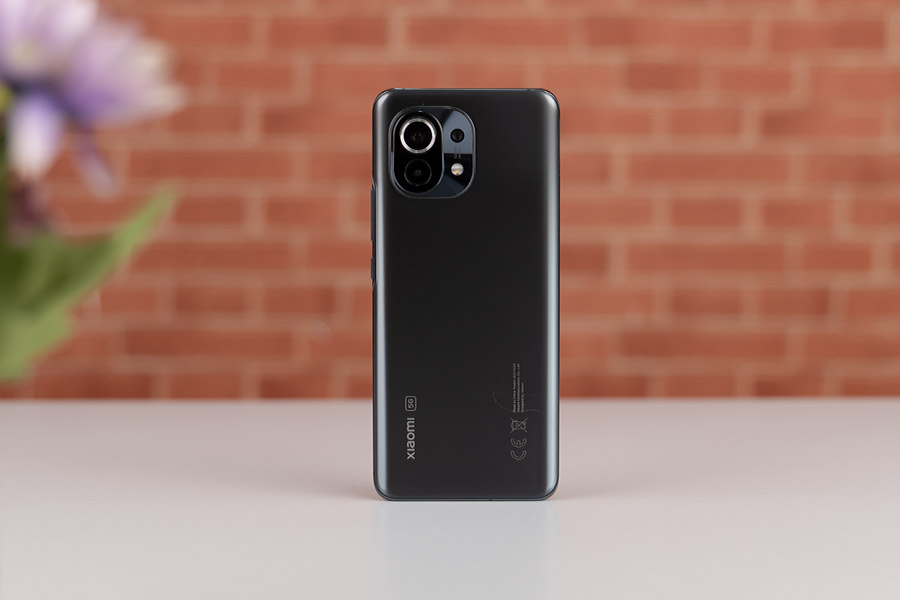
Sadly, Xiaomi didn’t choose to launch Mi 11 in a lot of markets, including India. If you ask me, I think it’s a killer competition to the likes of Samsung's Galaxy S21 and the OnePlus 9. Anyway, I will be sharing our long-term experience with the Xiaomi Mi 11 in this review, so let’s get straight into it!
Design & Build
- 74.6 x 164.3 x 8.06mm, 196 grams
- Glass back/front, Aluminum frames
- No IP rating, No 3.5mm headphone jack
Okay, starting with the design, after all this time, one of the things that we’ve really come to appreciate about this device is its form factor. Contrary to other Xiaomi phones like the Mi 11X Pro, it has an even weight distribution and throughout my usage, I've only had good things to say about its ergonomics.
Plus, the slight curves add to the comfortable grip while the aluminum frames give it a lightweight yet premium touch. So, holding the phone for long hours won't be a muscle exercise here.
But yes, if I had to compare, Samsung’s Galaxy S21 Ultra feels more premium than the Mi 11—although it’s also heavier and a little less comfortable, so the phone scores good marks on this front.
Slippin' Jimmy
Despite this, there are some flaws in its design. For instance, Mi 11 is quite slippery because of which it has fallen off my hands a couple of times when shootings photos/videos. Thankfully, it’s survived them all while we did get this visible scratch at the back.
Review Images
1/2
Buttons
So, it would certainly have been a lot better if Xiaomi had included Gorilla Glass Victus or at least Gorilla Glass 6 instead of the older Gorilla Glass 5 at the back. The company has installed Gorilla Glass Victus on the front though, which, I would say has been incredibly useful throughout our usage.
Yet, the biggest design compromise here remains that Xiaomi has only included the most basic ingress protection and the Mi 11 does not have an official IP rating—making it vulnerable to water and dust damage. So, this past month, we’ve had to be extra careful to not expose it to the rain since it’s been raining like cats and dogs here in Kathmandu.
Display
- 6.81-inches WQHD+ AMOLED display
- 120/480Hz refresh/touch sampling rate
- Corning Gorilla Glass Victus protection
While Xiaomi has cut some corners in the design aspect, the display is where this phone truly shines. Its 6.81-inch WQHD screen is a delight to look at. And because it supports HDR10 in Netflix too, the content consumption experience is further elevated.
Also, I like the fact that Xiaomi has not left out important features like SGS Eye Care and DC dimming in order to prevent eye strain due to blue light emissions and display flickering. On top of that, with the 1500 nits peak and 800 nits of normal brightness, the company has made sure to leave no room for complaints regarding visibility either.
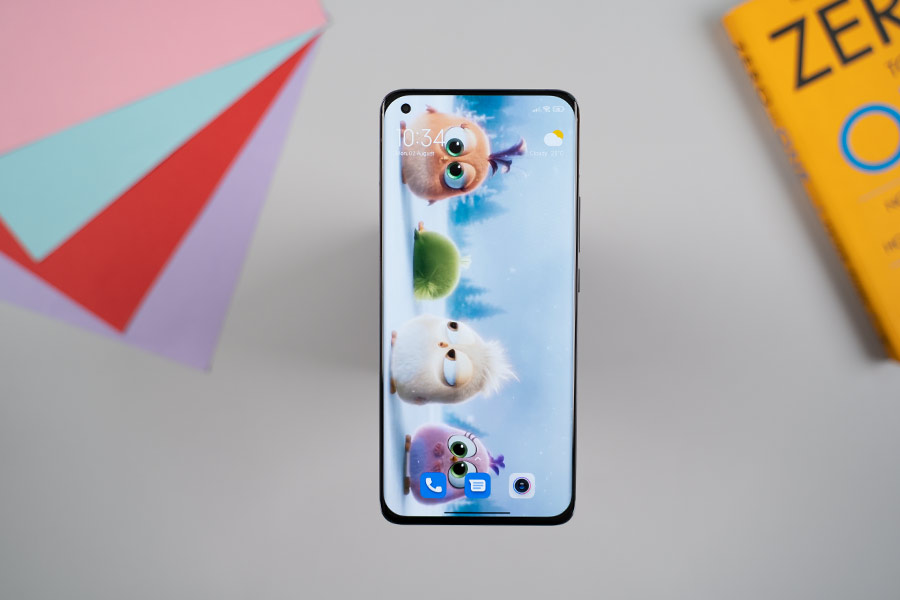
Even the touch response on this display is great. Likewise, apart from the visual treat of Mi 11’s display, the speakers on this thing are great too.
Balanced audio from the dual speaker
Now, when you compare it side-by-side with the S21 Ultra, it does sound a little less immersive. But these Harman Kardon tuned stereo speakers are loud, sound really balanced, and are definitely better than what Xiaomi offers in its mid-range devices. Do note that the secondary speaker sounds a little weird, but together, the stereo output is respectable.
Okay, back to the display, it is also home to an in-display fingerprint sensor. In my usage, I found it to be a little slow. Over time with the updates, the sensor has gotten a bit swift, but it is still slower than the likes of the OnePlus 9 or the Galaxy S21 Ultra for that matter.
I was hoping to be able to scale down or remove the fingerprint animation altogether, but Xiaomi sadly has not included that option in the settings. About the haptic feedback, while unlocking via fingerprint and typing, it feels incredibly premium and satisfactory.
Performance
- Octa-core Qualcomm Snapdragon 888 5G SoC (5nm)
- 8/12GB LPDDR5 RAM, 128/256GB UFS 3.1 storage (fixed)
- Android 11 with Xiaomi's MIUI 12 on top (upgradeable)
Alright, let’s now get to how the performance of this phone has been. And it won’t come as a surprise when I say that the Mi 11 is one of the best performing phones of 2021. Being one of the first smartphones to feature the Snapdragon 888 chipset alongside UFS 3.1 storage and LPDDR5 RAM, it has handled multitasking and switching between the heaviest of apps with a breeze.
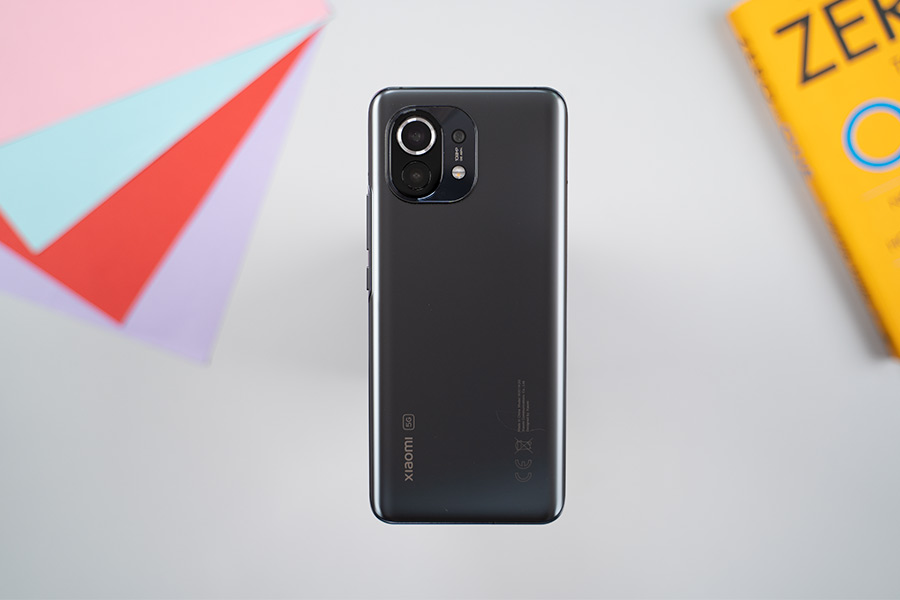
Also, thanks to the 120Hz refresh rate, UI transitions are smooth, and with zero lags or micro stutters—just a smooth sailing through and through.
Gaming experience
Likewise, gaming is another facet that this phone nails, almost. Extremely demanding games like Genshin Impact are well playable in their default settings. However, once you dial up the settings to higher fps modes, the Snapdragon 888 doesn't remain cool and that’s a common issue we have been facing with almost all the phones with this chip.
Hence, after prolonged gameplay sessions, it will result in quite a few stutters, a drop in fps, stability, and excessive heating near the camera module. As for other demanding games like PUBG Mobile and Call of Duty Mobile, they run quite well with impressively stable average fps count.
But here as well, the Snapdragon 888 tends to heat up the device and you might want to cool it down after one gaming session, and then resume again.
Less GPU-hungry titles with 120fps optimizations like VainGlory and Oddmar are well playable in 120fps too. Luckily, these games aren’t privy to the heating standards of the ones I discussed earlier. But for some weird reason, Critical Ops is not optimized for 120fps gameplay even though the game supports it.
How's MIUI on a flagship phone?
Overall, we have been quite satisfied with the performance of the Mi 11. Xiaomi has optimized the 120Hz refresh rate well too, so as mentioned earlier, UI transitions and animations are really smooth here. That being said, during all our usage, the major complaint about this phone has to be the unrefined software experience.
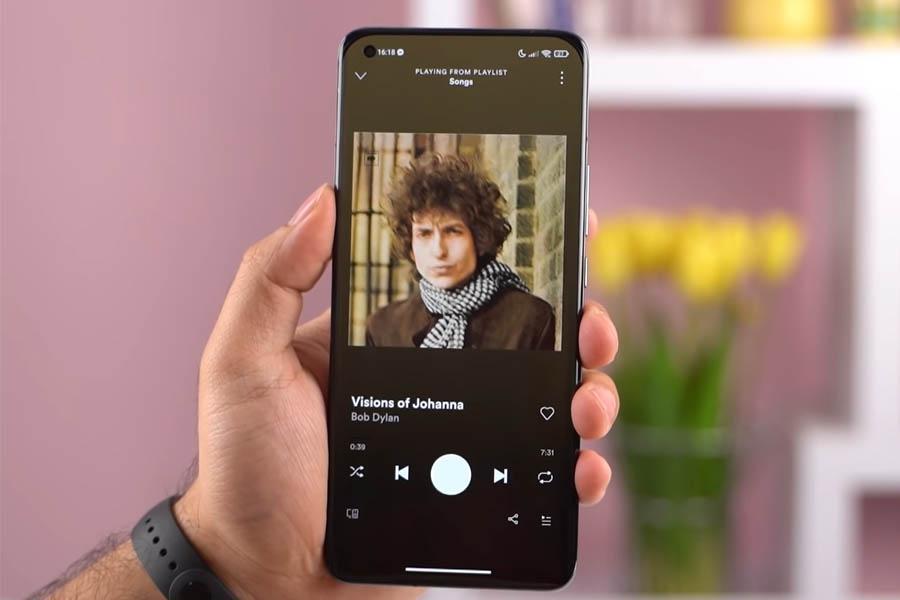
Unlike Apple, OnePlus, and Samsung, Xiaomi’s dark mode implementation is still broken. Take the invisible play/pause button on Spotify for example or the fact that with dark mode on, messages on Messenger appear like this. Previously, I thought that this issue was only prevalent in Xiaomi’s mid-range and budget offerings.
But evidently, the company hasn’t bothered to fix these teeny-tiny bugs even for its top-of-the-line products. Likewise, for the longest time, there was this annoying problem when trying to reach for notifications while watching Netflix, where the screen would act like target="_blank" rel="noopener">all jittery and something you'd see from a broken CRT TV.
Thankfully, the recent MIUI 12.5.5 update has fixed this issue. All in all, even though the performance of the Mi 11 is commendable, such petty software bugs truly make the experience bitter.
This, added with the fact that Xiaomi has literally not made any commitment as to how many years of Android and security updates this phone or any other Xiaomi phone for that matter will receive, is really frustrating. In contrast, Apple, Samsung, OnePlus, and even brands like OPPO and Vivo have committed to certain years of software updates.
Cameras
- Triple camera setup at the back
- (108MP main, 13MP ultrawide, 5MP telemacro)
- 20MP selfie camera in the punch-hole cutout
Review Images
1/2
Back
Okay, let’s now shift our gear towards the cameras. And honestly, for the most part, there’s not much to complain about. Of course, when you look at the specs, it’s nothing extravagant compared to the likes of the Mi 11 Ultra or the S21 Ultra. But these cameras hold their ground steady.
Normal Images
During our use, it has proven to be an impressive point-to-shoot camera.
Review Images
1/6
Mi 11
The color optimization part is still better on the S21 Ultra, but have a look at these samples, Mi 11’s images are not bad. We’re actually fond of the natural-ish color reproduction from its cameras.
Wideangle Images
The same thing applies for the ultra-wide images as well where the S21 Ultra has marginally better color optimization and a wider field of view.
Review Images
1/4
Mi 11
But for what it’s worth, the Mi 11 competes handsomely.
Portrait Images
The subtle and natural color reproduction continues with the portrait images too. S21 Ultra zooms in for better subject focus while the Mi 11 doesn’t.
Review Images
1/6
Mi 11
In any case, both of them are good camera phones for portraits. Edge detection, however, is not excellent in either of them.
Selfie Images
These phones pack an impressive selfie camera as well.
Review Images
1/6
Mi 11
It's just that portrait selfies from the S21 Ultra have a better-looking background.
Review Images
1/2
Mi 11
Otherwise, both phones do a similar job.
Telephoto Images
Now, since the Mi 11 does not have a telephoto lens, as expected, it falls behind the S21 Ultra when zooming to 10x, 5x, or even 3x.
Review Images
1/8
Mi 11 - 3x
But what we have come to realize is that we don’t really use the telephoto lens in our everyday life that much. All this time, the only instances when we had to switch to the telephoto camera were for taking photo samples for the review.
Nighttime Images
Xiaomi has also been a little cheeky with nighttime photography on the Mi 11 as it makes you wait for a few seconds to shoot even normal nighttime pictures. And because of that, its low-light photos appear to be brighter and more detailed.
Review Images
1/16
Mi 11
This is both a good thing and a bad thing. Despite the well-detailed shots, the delay ultimately makes Mi 11 a not-so-ideal point-to-shoot camera during the night, while the S21 Ultra only takes like a second to take the shot.
Review Images
1/4
Mi 11
About the night mode images, well, S21 Ultra takes the cake right away with better exposure maintenance, details, and colors under both normal and ultra-wide modes.
Review Images
1/2
Mi 11
Videography
For video stabilization, both of them feature gyro-EIS. Even so, we found 8K videos to be more stable from the Mi 11. This is also because the phone crops the footage by a lot to maintain steadiness. On the other hand, S21 Ultra gives you a wider frame without much stabilization in videos.
If you ask me, I don’t think 8K recording in smartphones is all that useful, at least right now, so I am going to let this one slide. On to the more realistic recording options, 4k 60 fps footage looks good from both phones, but the S21 Ultra definitely has better dynamic range and color processing.
When it comes to ultra-wide videos, you will get consistent recording options across all resolutions on the S21 Ultra which is something I really appreciate. Meanwhile, the Mi 11 only lets you shoot up to 1080p 60 fps from its ultra-wide and selfie camera.
Overall, during our use, we found the primary and ultra-wide cameras on the Mi 11 to be good, if not better than the S21 Ultra. And that’s a big compliment for the Mi 11. Likewise, I also compared its photos with the OnePlus 9 and found Mi 11 to be doing a better job in most of the scenarios.
Battery
- 4600mAh with 55W wired/50W wireless charging
Additionally, battery endurance has never been a problem with the Mi 11 either. Even under the WQHD resolution, it will give you 5.5 hours of Screen-on Time (SoT). Scaling it down to Full HD, you will be able to achieve up to 6.5 hours of SoT on a medium kind of usage.
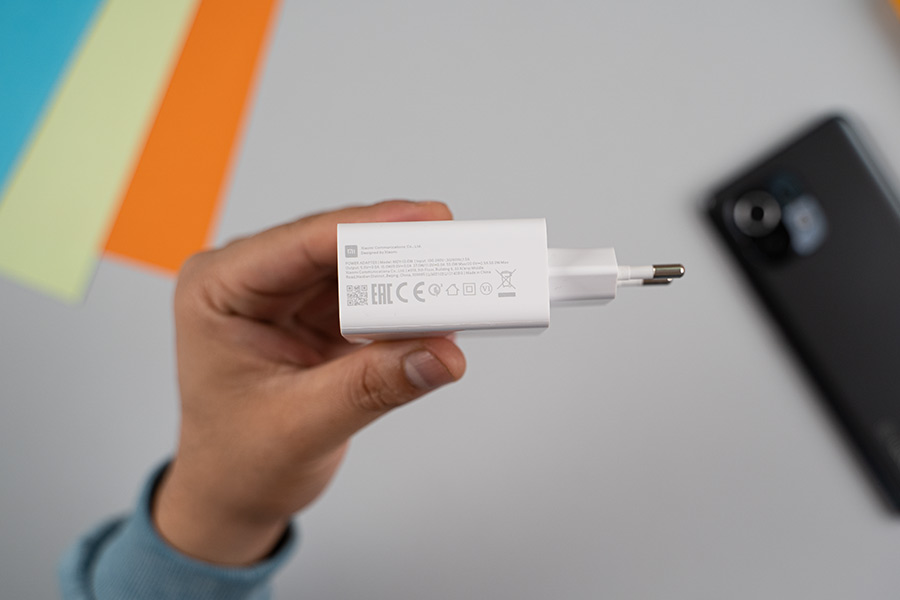
Plus, Xiaomi provides a 55-watt GaN charger inside the box, which if you’ve noticed, is comparatively smaller than other 65-watt chargers as it is made of Gallium Nitride instead of silicon. It is Power Delivery (PD) compliant too. As a result, we could charge our PD-compatible laptops and accessories with this charger.
Xiaomi Mi 11 Long-Term Review: Conclusion
Okay, as evident from the review, our time with the Xiaomi Mi 11 has been terrific. The company has effectively nailed the basics for a true flagship experience. The only thing that’s somewhat bugged us is the unpolished software experience. Plus, I am a little let down by the fact that the Mi 11 didn't launch in as many markets as it should have.
Maybe it's because of the global chipset shortage or Xiaomi's strategy of pushing the sales of Mi 11 Ultra... I am not quite sure. Regardless, looking at the bigger picture, the future of Xiaomi flagships looks promising, and I can’t wait to see what the Mi 12 has in store for us.
- Watch our video review of the Xiaomi Mi 11.
- Ergonomic, comfortable design
- Sharp, vibrant AMOLED display
- Decent audio from dual speakers
- Excellent overall performance
- Competitive photography ability
- Super-fast 55W wired charging
- Impressive battery endurance
- No IP rating against dust/water damage
- Lacks Gorilla Glass Victus at the back
- Unoptimized MIUI even for flagship phones
- Heats up rather quickly under heavy load
- Lacks a dedicated telephoto camera

To say something about myself, I have been writing tech and gadgets from 2021. Although coming from a non technical studies background, I'm someone who is always fascinated by the latest gadget and tech innovations, circling around. Besides writing, you'll find me listening music and aligning the stars through astrology and sometimes even, tarot cards! 😉🧿
Comments
No comments yet. Add a comment to start a discussion

























































































































